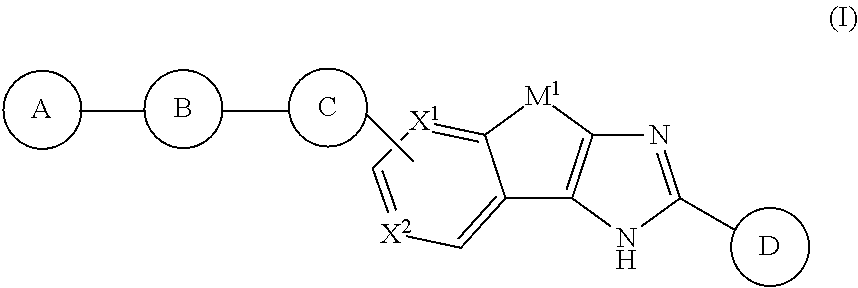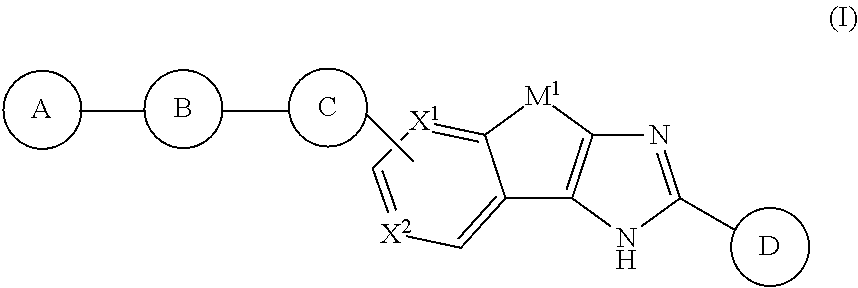Fused tricyclic silyl compounds and methods of use thereof for the treatment of viral diseases
a technology of tricyclic silyl and compounds, which is applied in the direction of group 3/13 element organic compounds, group 4/14 element organic compounds, drug compositions, etc., can solve the problems of unfavorable side effects, poor efficacy, and serious progressive liver disease of infected individuals, and achieve the effects of inhibiting hcv viral replication, and treating or preventing hcv infection
- Summary
- Abstract
- Description
- Claims
- Application Information
AI Technical Summary
Benefits of technology
Problems solved by technology
Method used
Image
Examples
example 1
Preparation of Intermediate Compound Int-1a
[0465]
[0466]To a solution of L-valine (10.0 g, 85.3 mmol) in 1M aqueous NaOH solution (86 mL) at room temperature was added solid sodium carbonate (4.60 g, 43.4 mmol). The reaction mixture was cooled to 0° C. (ice bath) and then methyl chloroformate (7.20 mL, 93.6 mmol) was added dropwise over 20 minutes. The reaction mixture was then allowed to warm to room temperature, and allowed to stir at room temperature for an additional 4 hours. The reaction mixture was then diluted with diethyl ether (100 mL), the resulting solution was cooled to at 0° C., and then concentrated hydrochloric acid (18 mL, 216 mmol) was added slowly. The reaction was extracted with EtOAc (3×100 mL) and the combined organics were dried over MgSO4, filtered and concentrated in vacuo to provide Compound Int-1a (13.5 g, 90%), which was used without further purification.
[0467]The following intermediates can be prepared by the reaction of L-valine with isopropyl chloroforma...
example 2
Preparation of Intermediate Compound Int-2a
[0468]
[0469]To a solution of D-phenylglycine (10.0 g, 66.1 mmol) and NaOH (21.2 g, 265 mmol) in water (60 mL) at 0° C. was added methyl chloroformate (10.2 mL, 133 mmol) dropwise over 20 minutes. The resulting mixture was allowed to stir at 0° C. for 1 hour, then was acidified using concentrated hydrochloric acid (25 mL, 300 mmol). The acidic solution was extracted with EtOAc (3×100 mL) and the combined organics were dried over MgSO4, filtered and concentrated in vacuo to provide Compound Int-2a (12.6 g, 91%), which was used without further purification.
[0470]The following intermediates can be prepared by the reaction of glycine, L-Alanine and 4-F phenylglycine, respectively with methyl chloroformate (Aldrich Inc.) using the method described above:
example 3
Preparation of Intermediate Compound Int-3a
[0471]
[0472]A solution of D-phenylglycine (20.0 g, 132 mmol), 37% aqueous formaldehyde (66 mL, 814 mmol) and 5% Pd on carbon (8.0 g, mmol) in a mixture of methanol (80 mL) and 1 N HCl (60 mL) was placed on a hydrogenation shaker and shook under an atmosphere of 35-40 psi hydrogen for 4 hours. The reaction was then flushed with nitrogen, filtered through a celite pad and concentrated in vacuo to provide Compound Int-3a (29.7 g, quant.) as a white solid, which was used without further purification.
PUM
| Property | Measurement | Unit |
|---|---|---|
| temperature | aaaaa | aaaaa |
| pH | aaaaa | aaaaa |
| temperature | aaaaa | aaaaa |
Abstract
Description
Claims
Application Information
 Login to View More
Login to View More - R&D
- Intellectual Property
- Life Sciences
- Materials
- Tech Scout
- Unparalleled Data Quality
- Higher Quality Content
- 60% Fewer Hallucinations
Browse by: Latest US Patents, China's latest patents, Technical Efficacy Thesaurus, Application Domain, Technology Topic, Popular Technical Reports.
© 2025 PatSnap. All rights reserved.Legal|Privacy policy|Modern Slavery Act Transparency Statement|Sitemap|About US| Contact US: help@patsnap.com



